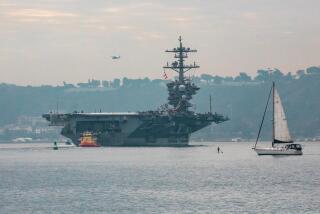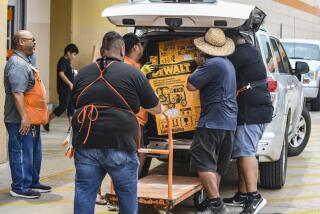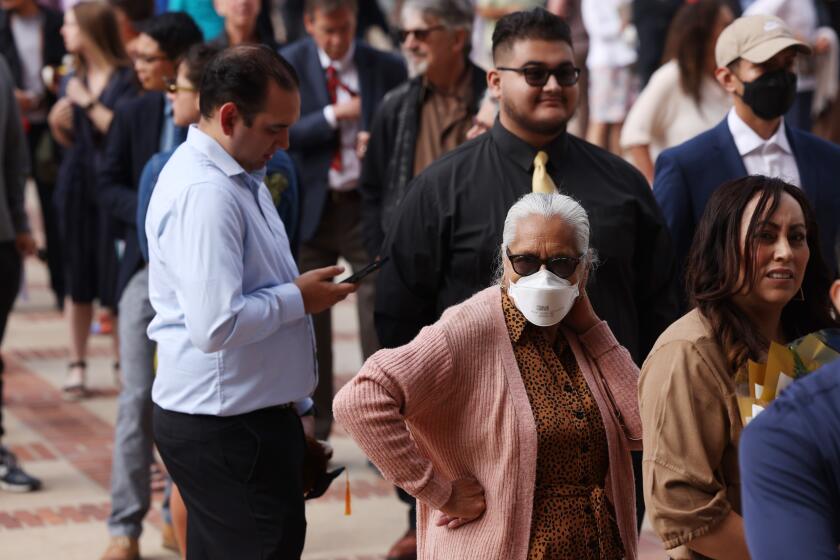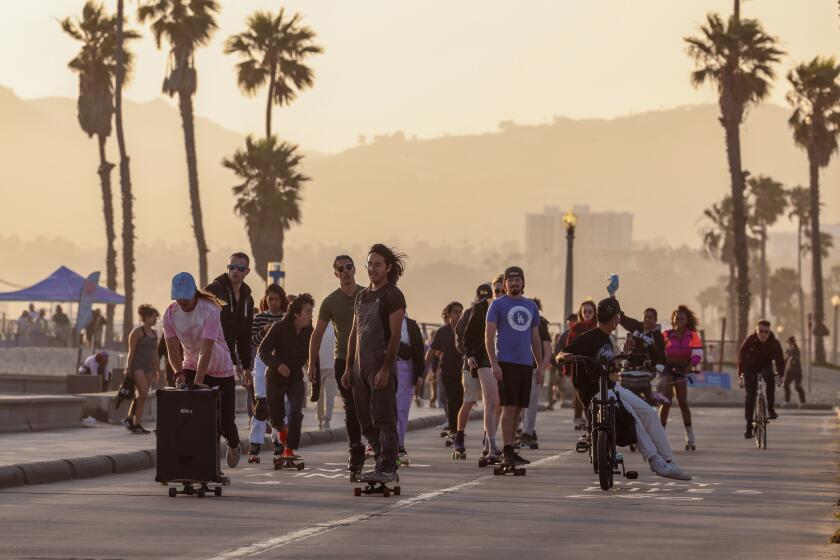Coronavirus spread on aircraft carrier Theodore Roosevelt is accelerating, captain says
The captain of the San Diego-based aircraft carrier Theodore Roosevelt, in port in Guam fighting a coronavirus outbreak among its crew, says that unless the U.S. Navy takes immediate action to isolate the crew off the ship, COVID-19 will continue to spread and “there will be losses.”
The Roosevelt pulled into Guam late last week after several sailors on board tested positive for COVID-19. That was two weeks after the ship visited Da Nang, Vietnam, a country with known coronavirus cases.
The virus has reportedly spread to dozens of other sailors on the nuclear-powered aircraft carrier, which typically houses more than 5,000 sailors. An aircraft carrier functions like a city at sea, but with an airport on its roof.
In the letter published by the San Francisco Chronicle, Capt. Brett Crozier said there were two possible outcomes for the ship and its crew: remove the crew from the ship and disinfect it, or “maximize warfighting readiness” to redeploy as quickly as possible.
If the Navy chooses the second option, “there will be losses to the virus,” Crozier wrote in his letter, which was sent Sunday to Pacific Fleet commanders.
“We are not at war, and therefore cannot allow a single sailor to perish as a result of this pandemic unnecessarily,” Crozier wrote. “Decisive action is required now.”
On CNN on Tuesday, Thomas Modly, acting Navy secretary, said that the service was working to move sailors off the ship in Guam but that there were challenges.
“We’ve been working actually the last several days to move those sailors off the ship and to get them into accommodations on Guam,” Modly said. “The problem is that Guam doesn’t have enough beds right now, and so we’re having to talk to the government there to see if we can get some hotel space [or] create some tent-type facilities.
“We don’t disagree with the C.O. on that ship,” Modly said.
Later Tuesday, Mark Esper, the secretary of Defense, and Adm. J.C. Aquilino, the Pacific Fleet commander, contradicted Modly.
Esper told CBS Evening News that “I don’t think we are at that point yet,” when asked about moving sailors off of the ship. Esper said he had not read Crozier’s letter.
Aquilino told reporters that there were issues finding rooms for the sailors on Guam, but that the Navy is working with the island’s governor for a solution.
It is unclear if there are other ships similarly affected by the coronavirus. The Navy recently stopped reporting the number of COVID-19 cases on its ships.
The Pentagon said Monday it would not release to the public specific numbers of COVID cases on its bases or by geographic regions. Instead, the military services and the Defense department are announcing total numbers of cases worldwide.
In a statement Tuesday, the Navy acknowledged that Crozier’s letter was sent to leadership of the Pacific Fleet.
“Navy leadership is moving quickly to take all necessary measures to ensure the health and safety of the crew of USS Theodore Roosevelt,” a Navy official said in an emailed statement.
The fleet is “pursuing options” raised by Crozier in the letter, the official said.
Since COVID-19 began to spread among the military community, leaders have repeatedly emphasized that their ships and crews are mission-ready, even as they moved to curtail the virus.
Crozier reflected that in his letter, saying the ship could be ready to fight if needed.
“If required the [Roosevelt] would embark all assigned sailors, set sail, and be ready to fight and beat any adversary that dares challenge the U.S. or our allies,” Crozier wrote.
Other ships — still in port in San Diego — have recalled their entire crews, who will remain on board at least 14 days.
According to Crozier, sailors who tested negative for the virus became symptomatic and then tested positive one to three days after negative tests.
The conditions on the Roosevelt — and all Navy ships — are conducive to the spread of the virus, Crozier wrote.
On Navy ships, the vast majority of their crews live in shared areas called berthing compartments, with most bunks, or racks, stacked three deep. The main decks of ships, which are where medical and chow halls are located, are traversed by much of the crew several times per day.
Maintaining recommended social distancing in these spaces is not possible on the Roosevelt, Crozier wrote.
More to Read
Start your day right
Sign up for Essential California for news, features and recommendations from the L.A. Times and beyond in your inbox six days a week.
You may occasionally receive promotional content from the Los Angeles Times.







